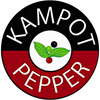Peppercake, the predecessor of gingerbread, or how pepper got into sweet pastries
Have you ever wondered how gingerbread got its name? Fragrant bread with honey was already baked by the ancient Egyptians. Perhaps it was precisely because of the close connection to the Middle East that pepper began to be added to this delicacy. Over time, this pastry made its way to the Czech lands, where it began to be called after the peppery taste.

How the original pepperbread gradually became gingerbread
While today we perceive gingerbread as a sweet treat that we do not consume very often, in the past it was a dish eaten almost every day. Its baking was the craft of specialized artisans called koláčníci, mazanečníci, or caletníci.
The original gingerbread recipe consisted of flour, honey, and pepper. During the Renaissance, gingerbreads were even baked so heavily spiced with pepper that they were used as an equivalent to today's beer snacks. Their spiciness increased thirst, so they were served in taverns to encourage guests to drink as much as possible.
Gingerbread spices are still mildly peppered today
Pepper is still part of gingerbread spices today, but in a significantly smaller amount. In blends, which are often a secret of each manufacturer, it is usually complemented by clove, cinnamon, fennel, anise, allspice, star anise, cardamom, and nutmeg or flower.
It is interesting that these spices have similarly beneficial and healing effects on the body, often associated with the digestive system. After all, gingerbread was once used as a remedy to get rid of various parasites living in the stomach and intestines. However, those times are long gone, and today gingerbread is a treat that scents every Christmas, without which no fair can do, and which brings a smile to the face of every child.
Share






